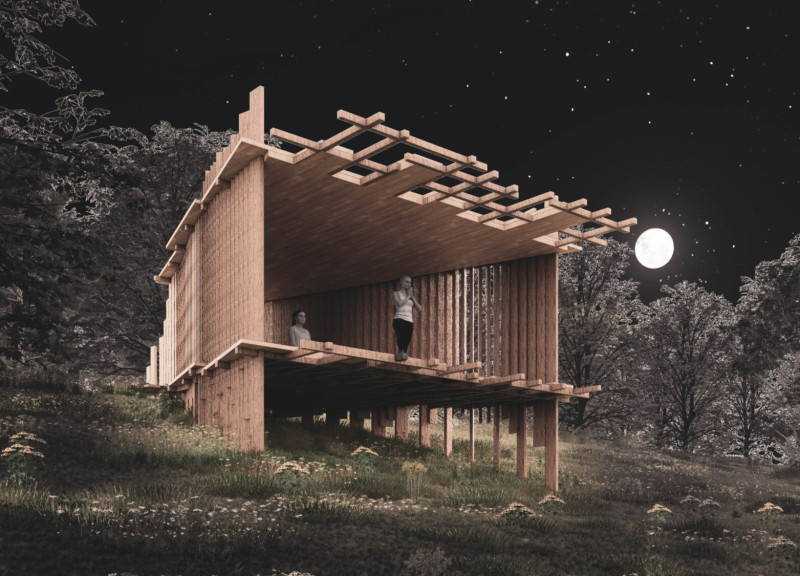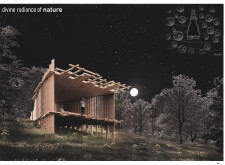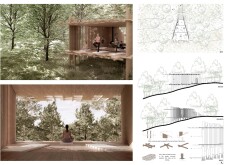5 key facts about this project
Unique Materiality and Design Features
One notable aspect of this project is its material selection. Key materials include oak wood, utilized in both structural elements and wall surfaces, promoting durability and sustainability. The use of transparent glass serves to enhance natural lighting and establish continuity between indoor and outdoor environments. Additionally, elements of natural stone or earth may be integrated into foundation structures and pathways to reinforce the connection with the site's natural characteristics. The design also features an innovative slatted roof structure, which facilitates light passage and ventilation while framing views of the external landscape.
Another distinguishing feature of this architecture is its elevated design, supported by slender pillars. This approach minimizes ground disturbance, preserving the existing flora and supporting airflow beneath the structure. The layout includes versatile spaces for collective meditation and individual contemplation, striking a balance between public interaction and private experience. Integrated seating areas and semi-enclosed designs support diverse spiritual practices, allowing users to transition fluidly throughout the space.
Integration with the Natural Environment
The architectural design of "Divine Radiance of Nature" achieves an integrative approach to landscape interaction. Careful orientation of the structure maximizes views of the surrounding environment, enhancing users' connection to nature. The strategic planning of acoustics and openings ensures a peaceful atmosphere conducive to meditation.
The overall design philosophy adheres to principles of sustainability and ecological mindfulness, evidenced by the project's minimal intervention in the existing landscape and its choice of materials. These elements contribute to an architecture that does not merely coexist with nature, but complements and enhances it.
For those seeking more details about the project, including architectural plans, architectural sections, and various architectural ideas, further exploration of this project presentation is encouraged. Insights into the design approach can provide a comprehensive understanding of how architecture can effectively engage with the natural landscape while serving practical and spiritual functions.


























